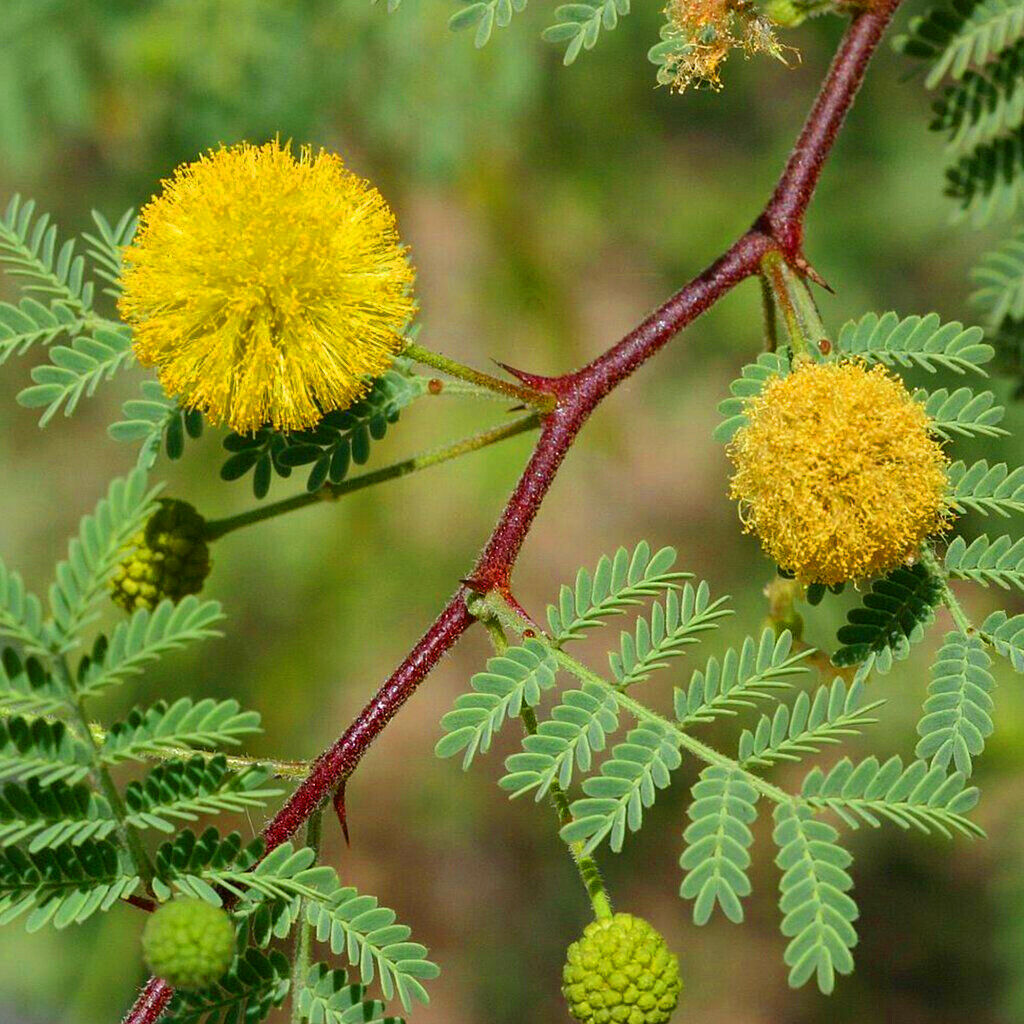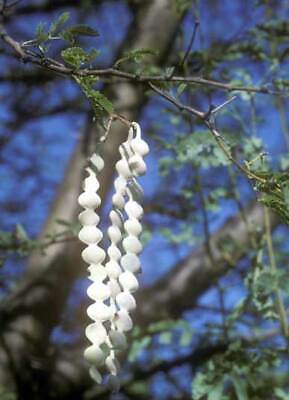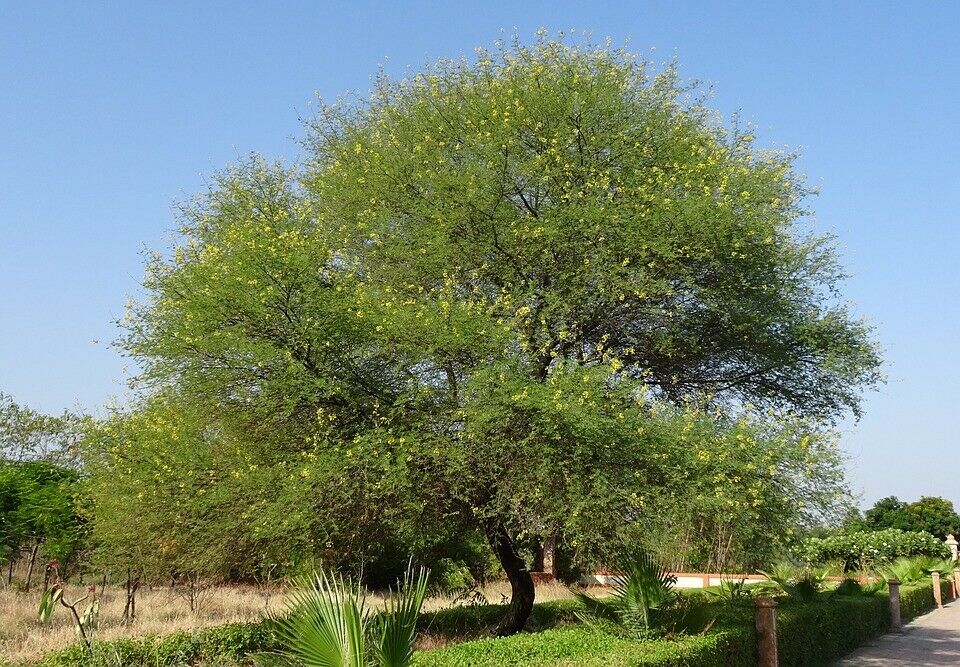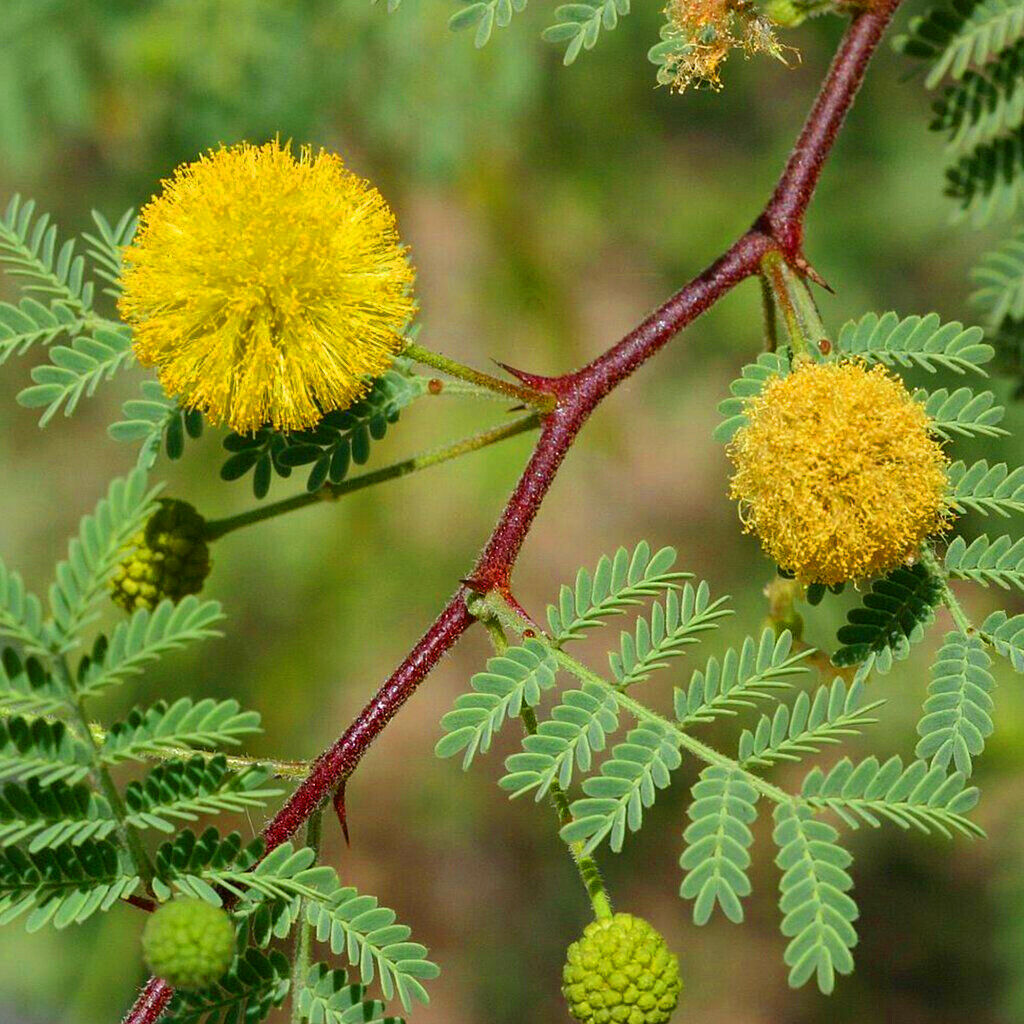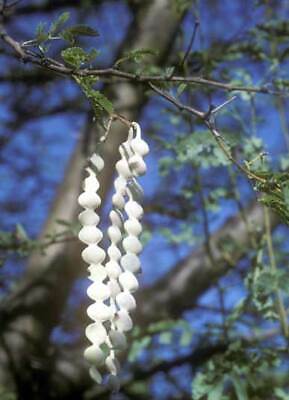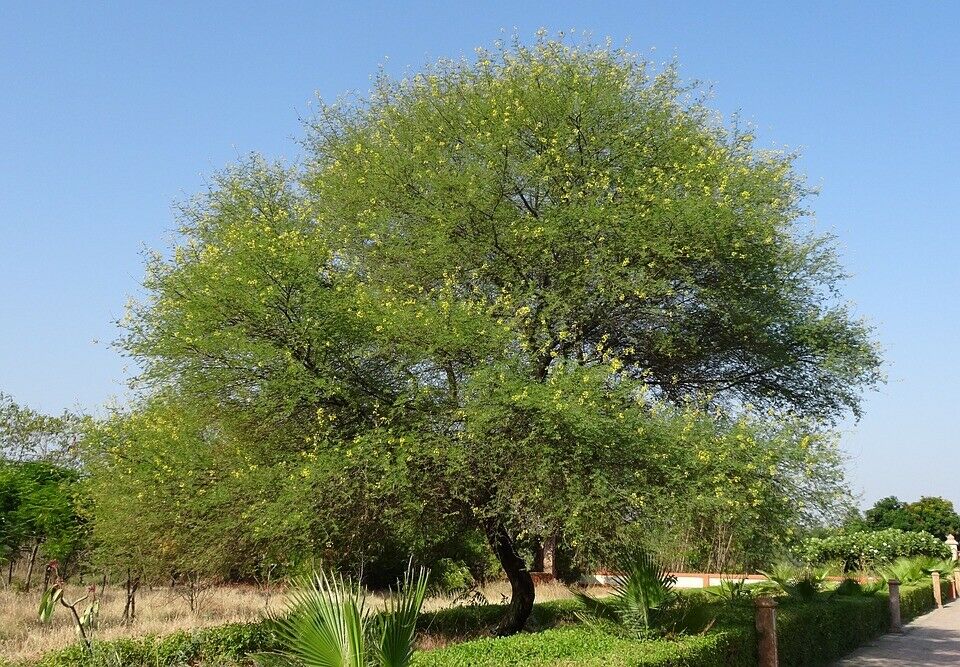Floridaseeds
Gum Arabic Tree Acacia nilotica 20 Seeds
Gum Arabic Tree Acacia nilotica 20 Seeds
Couldn't load pickup availability
The gum arabic tree is a legume tree from the dry tropics and subtropics. It is valued for the production of gum Arabic. The leaves and pods are browsed by livestock. The gum arabic tree is a low branching, small, and spiny tree, which grows up to 7-15 m in height with a girth of about 1.3 m. It has a rounded, flat-topped crown. The tree is deciduous, dropping its leaves during the dry season. Under dry conditions, the taproot develops to a great depth allowing the tree to become larger than usual. The trunk is about 30 cm in diameter and is covered by a greyish-white bark that becomes dark, scaly and thin in old trees. The tree bears prickly branches, armed with three hooked thorns, up to 7 mm long, just below the nodes. The leaves are pinnately compound, 3.5-8 cm long. Their rachis may be spiny. The leaflets are linear to oblong, 1-9 mm long and 0.5-3 mm wide. They may be sparsely hairy and a pale glaucous green in color. The yellowish-white and fragrant flowers are borne on cylindrical spikes, 5-10 cm long. The fruits are straight, hairy, flat, dehiscent papery pods, about 7 cm long x 2 cm wide. Green and pubescent when young, they become a shiny bronze with maturity. They contain 3-6 smooth, flat shiny seeds.
The most important use of the gum arabic tree is the harvest of gum arabic, an exudate from the bark that is tapped for this purpose during the dry season. Several thousand tons of gum arabic are internationally traded every year, mainly in Europe and the USA. Gum arabic has many commercial uses: food (flavor fixative, emulsifier, stabilizer of dairy products), pharmaceutics (these two sectors representing 60-75% of the use of gum arabic), and industrial products (inks, pigments, polishes). Gum arabic was reported to have antidotal effects as it can destroy many alkaloids. Acacia senegal seeds are traditionally used for human nutrition in Rajasthan. The wood is valued as firewood, and can be used to produce charcoal. The wood is also used to make utensils, poles and fence-posts. The bark and the roots provide fiber and make strong ropes and fishing nets. Gum arabic trees provide valuable fodder to sheep, goats and camels. Leaves and pods are browsed by domestic and wild ruminants. Flowers provide valuable nectar to bees for honey production.
Growing Instructions
- Scarify the seeds by nicking or sanding the seed coat.
- Soak the seeds in water for several hours.
- Put a mixture of potting soil and sand or perlite into a pot with drainage holes in the base. The soil should be moist and well-drained.
- Sow the seeds on the soil.
- Cover the seeds with a thin layer of soil.
- Water the seeds. Keep the soil moist but not wet.
- When the plants are a few inches tall, they can be transplanted.

